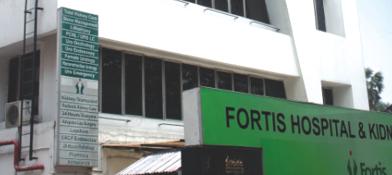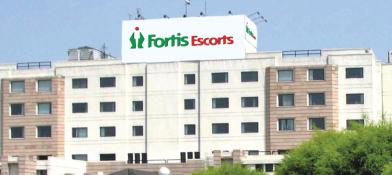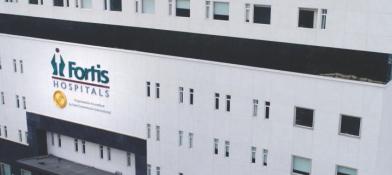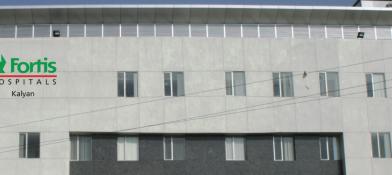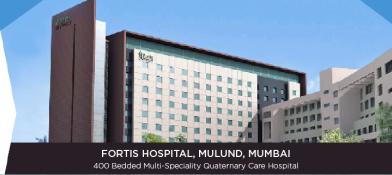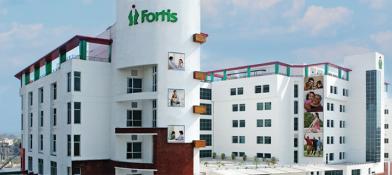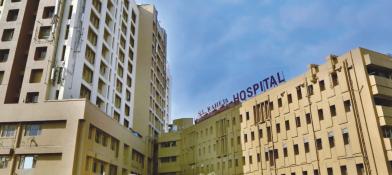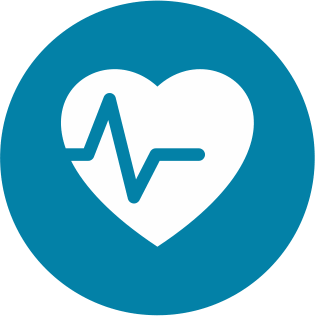About Orthopaedics
Orthopedics deals with the management of aliments of the musculoskeletal system. The musculoskeletal system comprises the body’s structure and the mechanics that make it work. Doctors in this field specialize in diagnosing, treating, and treating conditions affecting the bones, joints, muscles, tendons, ligaments, cartilage, and nerves in patients of all ages, from newborn babies to the elderly. The field has evolved into a multidisciplinary specialty encompassing a variety of musculoskeletal disorders, from fractures and joint injuries to degenerative conditions and congenital anomalies. It plays a significant role in restoring mobility, reducing pain, and improving the quality of life for millions globally.
The Subspecialty of Orthopedics
Orthopedics includes multiple subspecialties, each focusing on specific aspects of musculoskeletal conditions. The key subspecialties within orthopedics include:
- Sports Medicine: Sports medicine orthopedists specialize in diagnosing, treating, and preventing injuries related to sports and other physical activities. They work with athletes to improve their performance and help them resume their activities quickly after injury.
- Orthopedic Trauma: Orthopedic trauma includes severe musculoskeletal injuries, including fractures, dislocations, and complex soft tissue injuries. It is treated surgically and non-surgically by specialists.
- Pediatric Orthopedics: Pediatric orthopedic doctors diagnose and treat musculoskeletal conditions in children and adolescents. The conditions include congenital anomalies, growth plate injuries, developmental disorders, and pediatric sports injuries.
- Hand Surgery: Hand surgery treats conditions affecting the hand, wrist, and forearm. These may include fractures, nerve injuries, tendon injuries, arthritis, and issues such as carpal tunnel syndrome and trigger finger.
- Foot and Ankle Treatment: Foot and ankle surgery includes the diagnosis and treatment of conditions that affect the feet and ankles, such as fractures, ligament injuries, deformities, arthritis, and sports-related injuries.
- Spine Treatment: Spine specialists focus on the diagnosis and treatment of conditions affecting the spine, including degenerative disc disease, spinal stenosis, herniated discs, spinal deformities, and spinal tumors. The treatment consists of non-surgical and surgical interventions.
- Orthopedic Oncology: Orthopedic oncologists focus on diagnosing and treating bone and soft tissue tumors such as primary bone cancers, metastatic bone disease, and benign tumors of the musculoskeletal system. The treatment comprises surgical resection, radiation therapy, chemotherapy, and limb-saving procedures.
- Orthopedic Rehabilitation: The orthopedic rehabilitation team works to rehabilitate and recover patients following an orthopedic surgery or injury. They create customized rehabilitation programs to improve mobility, strength, and function to maximize patient outcomes and quality of life.
Treatment Techniques Used in Orthopedics
Orthopedics uses multiple techniques and procedures to diagnose, treat, and manage musculoskeletal conditions. These techniques range from non-invasive approaches to surgical interventions.
- Physical Therapy: Physical therapy plays a significant part in orthopedic treatment and comprises exercises and techniques to enhance strength, flexibility, and range of motion. Physical therapists use manual therapy, therapeutic exercises, ultrasound, and electrical stimulation to help patients recover from injuries, surgery, or chronic conditions.
- Orthotics and Bracing: Orthotics and braces, such as shoe inserts, knee braces, ankle braces, and spinal braces, support the musculoskeletal system. They correct alignment issues, reduce pain, and prevent further injury.
- Pharmacotherapy: Medications such as nonsteroidal anti-inflammatory drugs (NSAIDs), analgesics, muscle relaxants, and corticosteroids are prescribed to manage pain and inflammation due to musculoskeletal conditions.
- Injections: Injections deliver medicines to the affected joints, tendons, or soft tissues to alleviate pain, reduce inflammation, and promote healing. Joint injections include corticosteroid injections, hyaluronic acid injections, platelet-rich plasma (PRP), and stem cell injections.
- Minimally Invasive Procedures: Minimally invasive orthopedic procedures are used for cases with less tissue damage. They reduce pain and help recover faster, including arthroscopy, percutaneous fracture fixation, and minimally invasive spine surgery.
- Orthopedic Surgery: Orthopedic surgery encompasses many procedures to treat musculoskeletal conditions, including fractures, joint injuries, degenerative diseases, and congenital anomalies. Common orthopedic surgeries include joint replacement (e.g., hip replacement, knee replacement), fracture repair, ligament reconstruction (e.g., ACL reconstruction), spinal fusion, and corrective osteotomy.
- Traction and Manipulation: Traction involves applying a gentle pulling force to the affected area to relieve pressure on the spine or joints and promote the realignment of bones or soft tissues. Manipulation involves using controlled force on joints to improve mobility, reduce pain, and restore function.
Potential Risks in Orthopedic Treatment
Orthopedic treatment, whether surgical or non-surgical, poses certain potential risks and complications that people should be aware of before undergoing any procedure. Some of these risks are as follows:
- Infection is a possible complication of any procedure. Despite sterile measures, bacteria can enter the surgical site and lead to infection.
- Bleeding can occur during joint replacements and spinal procedures, leading to hematoma formation, swelling, and pressure on surrounding tissues.
- Blood clots can occur in procedures involving prolonged immobilization or manipulation of the lower extremities and can be life-threatening if they reach the lungs.
- Nerve damage can occur during nerve decompression and cause numbness, tingling, weakness, or loss of sensation in the affected area.
- Implant failure can occur due to loosening or dislocation of the implant components.
- People experience stiffness and limited range of motion in the affected joint or limb due to scar tissue formation, muscle weakness, or improper rehabilitation.
- In some cases, fractures or bone grafts may fail to heal correctly.
- Some patients might experience allergic reactions to medicines, anesthesia, or implant materials used during orthopedic treatment.
Benefits of Orthopedic Treatment
Some advantages of orthopedic surgery include:
- Reduced pain
- Enhanced functionality
- Improved range of motion
- Fixing fractures
- Removal of tumors
Standing at the forefront of musculoskeletal care, orthopedics offers innovative techniques, treatments, and interventions to address various conditions and restore mobility, function, and quality of life for people worldwide. As the field continues to evolve, Fortis is embracing advancements in technology and interdisciplinary collaboration to meet the evolving needs of the patients and improve musculoskeletal health outcomes.
Medical Procedures for Orthopaedics
View allOur patient’s stories
View allExplore blogs
View allExplore Videos
View all-
 Dr Ronen Roy
Dr Ronen Roy
Related Specialities
Other Specialities
Orthopaedics
-
Explore Hospitals for Orthopaedics
Fortis CDOC, Chirag Enclave, New Delhi Fortis Escorts Heart Institute, New Delhi Fortis Escorts Hospital, Amritsar Fortis Escorts Hospital, Faridabad Fortis Escorts Hospital, Jaipur Fortis Flt. Lt. Rajan Dhall Hospital, Vasant Kunj Fortis Hospital - Greater Noida Fortis Hospital & Kidney Institute, Gariahat, Kolkata Fortis Hospital BG Road Bangalore Fortis Hospital, Rajajinagar, Bengaluru Fortis Hospital CG Road Bangalore Fortis Hospital, Richmond Road, Bengaluru Fortis Nagarbhavi Bangalore Fortis Hospital, Anandpur, Kolkata Fortis Hospital, Kalyan, Mumbai Fortis Hospital, Ludhiana Fortis Hospital, Mohali Fortis Hospital, Mulund, Mumbai Hiranandani Fortis Hospital, Vashi, Mumbai Fortis Hospital, Noida Fortis Hospital, Shalimar Bagh, New Delhi Fortis Memorial Research Institute, Gurgaon S L Raheja Hospital, Mumbai Fortis Hospital Mall Road, Ludhiana Fortis La Femme, Greater Kailash II, New Delhi -
Explore Doctors for Orthopaedics by Hospital
Doctors in Fortis CDOC, Chirag Enclave, New Delhi Doctors in Fortis Escorts Heart Institute, New Delhi Doctors in Fortis Escorts Hospital, Amritsar Doctors in Fortis Escorts Hospital, Faridabad Doctors in Fortis Escorts Hospital, Jaipur Doctors in Fortis Flt. Lt. Rajan Dhall Hospital, Vasant Kunj Doctors in Fortis Hospital - Greater Noida Doctors in Fortis Hospital & Kidney Institute, Gariahat, Kolkata Doctors in Fortis Hospital BG Road Bangalore Doctors in Fortis Hospital, Rajajinagar, Bengaluru Doctors in Fortis Hospital CG Road Bangalore Doctors in Fortis Hospital, Richmond Road, Bengaluru Doctors in Fortis Nagarbhavi Bangalore Doctors in Fortis Hospital, Anandpur, Kolkata Doctors in Fortis Hospital, Kalyan, Mumbai Doctors in Fortis Hospital, Ludhiana Doctors in Fortis Hospital, Mohali Doctors in Fortis Hospital, Mulund, Mumbai Doctors in Hiranandani Fortis Hospital, Vashi, Mumbai Doctors in Fortis Hospital, Noida Doctors in Fortis Hospital, Shalimar Bagh, New Delhi Doctors in Fortis Memorial Research Institute, Gurgaon Doctors in S L Raheja Hospital, Mumbai Doctors in Fortis Hospital Mall Road, Ludhiana Doctors in Fortis La Femme, Greater Kailash II, New Delhi



